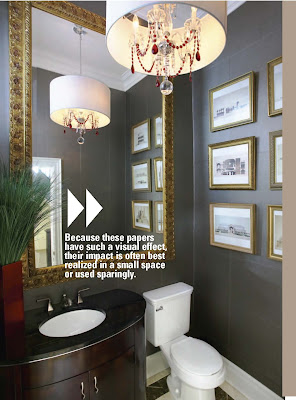Trash Talk: Loft reno represents extreme recycling
October 31, 2009
Special to the Star
They had to build, wire and furnish a live-work space, including bedroom, bathroom, kitchen and living area which will appeal to young, hip IT executives with a taste for boutiquehotel living. Building owner Ron Smith coughed up $5,000 to cover what they couldn't find in the garbage.
(Team members guessed comparable renos would cost $150,000 to $300,000. Indeed, seven workers would gobble up $5,000 in no time.)
The show has a reality-TV tone, with artificial time pressure, Smith playing a hard-to-please client, general contractor Geoff Woodmansey acting the sergeant-major, and personal tensions manipulated by the producers for dramatic effect.
As designer Michelle Mawby, who runs Lucid Interior Design, describes it: "There were some times when we didn't like each other, and I think at the end, none of us ever wanted to see each other again."
But her design flare, the nifty ideas from the expert scroungers, the skills of the building crew and some serendipitous finds resulted in a great space with striking elements crafted from "repurposed" discards.
So where did the team find stuff? Hanging out at the city's transfer station and asking drivers for materials (they also got paint free at the hazardous household waste depots), fishing in the Don River for old grocery carts, visiting house construction sites, cruising the streets on garbage day, lucking out with hotline calls after they posted flyers around town, checking out demolition at Pearson airport (this was 2008) and heading off to Habitat for Humanity's ReStore, which sells recycled materials, to supplement the free stuff.
A downtown church proved a saviour, with a treasure trove in the basement: old windows with divided panes, which Michelle used in the bathroom to striking effect to enclose the tub and shower area; church pews, which were transformed into an eight-foot table; an old oak office desk, which became a bathroom vanity, complete with handy drawers, and assorted other items.
A baby grand piano cover out of the trash became a coffee table, and an old cast iron tub, a couch (just like Audrey Hepburn's in Breakfast at Tiffany's); Anthony used weeping tile for a wine rack and paperbacks, stuffed into a wood frame, to make a chair. Gordie created a hanging light fixture with wood circles around orange shades. The team also turned old shopping carts into chairs, and Gordie used the wheels for a sliding barn door system. Technician Jean-Marc Haddad wired old TVs to create a display wall and built a bike-powered generator to power high-tech gadgetry.
The pièce de résistance, though, was the grill of a 1978 Chrysler New Yorker fronting the kitchen island. Over it is the car hood, with holes cut to accommodate some large bulbs found at the airport, while tail lights became wall sconces. A concrete counter, poured by builder Cam Pikul, was the perfect top.
As well, a good coat of paint does wonders for beat-up chairs and dated kitchen cabinets. Michelle loved the loft's scarred wood floors, but to work in a living space they needed to be well varnished. "Even if you leave brick walls, you should still coat them so you don't get the residue on your hands," she says. On future projects, when interiors are being ripped out, she'll have clients call Habitat's ReStore, and she'll contact Gordie to see if he wants any of the old wood or other materials heading for the dump. As he said in the show when faced with making old wood usable: "I'd rather waste my time than a tree in the forest." (His email is gordie@ahigherplane.ca.)
Trash Talk appears Saturdays in New in Homes & Condos. Send comments and questions to
e_moorhouse@sympatico.ca




































 French artist Pierre Maraval calls his photo exhibitions ‘‘human landscapes,'' each a collection of 1,000 portraits of individuals linked by a common characteristic or shared passion. Athletes, AIDS workers, Internet pioneers, and women from some of the world's greatest cities are among those whom Maraval has celebrated since he began his project in '93. Now he turns his lens on Toronto and the women who enrich the city's flourishing cultural scene through Toronto's Mille Femmes.
French artist Pierre Maraval calls his photo exhibitions ‘‘human landscapes,'' each a collection of 1,000 portraits of individuals linked by a common characteristic or shared passion. Athletes, AIDS workers, Internet pioneers, and women from some of the world's greatest cities are among those whom Maraval has celebrated since he began his project in '93. Now he turns his lens on Toronto and the women who enrich the city's flourishing cultural scene through Toronto's Mille Femmes. 













